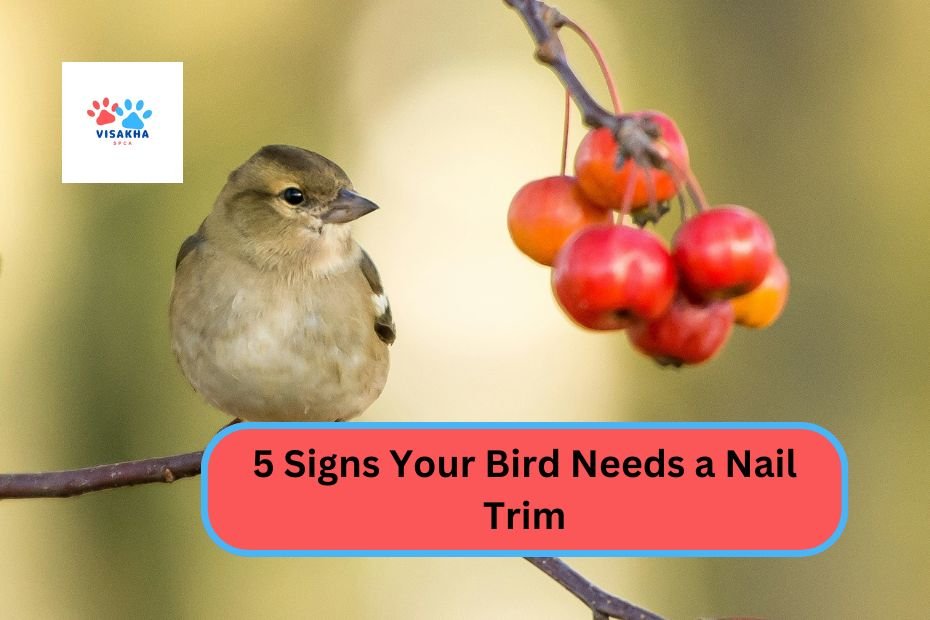Just like humans, birds require regular grooming to stay healthy and comfortable. One essential aspect of bird care is maintaining the proper length of their nails. Overgrown nails can lead to a variety of issues, including discomfort, injury, and even difficulty perching. Knowing when it’s time for a nail trim is crucial for keeping your bird happy and well-cared-for.
Here are five signs that your bird’s nails may need trimming:
1. Difficulty Perching
Birds rely on their feet to perch and grip various surfaces. If you notice your bird struggling to perch or having trouble gripping onto their favorite spots, overgrown nails could be the culprit. Long nails can make it difficult for your bird to hold onto perches, which may cause them to slip or appear unsteady.
What to Watch For:
- Wobbling or unsteady perching
- Frequent slipping off perches or other surfaces
- Difficulty balancing when sitting on a perch
2. Scratching You or Themselves
Bird nails are naturally sharp, but if you find that your bird is scratching you more than usual during playtime or cuddling, it could be a sign that their nails are too long. Similarly, if your bird is scratching themselves excessively, especially to the point of irritation or injury, it might be time for a nail trim.
What to Watch For:
- You getting scratched during handling
- Bird scratching themselves frequently, possibly causing irritation
- Visible discomfort when your bird uses their feet to groom or climb
3. Nails Curling or Twisting
When a bird’s nails become too long, they may start to curl or twist. Curved nails can cause discomfort for the bird and make it difficult for them to walk, perch, or groom themselves properly. If you notice that your bird’s nails are curling under their toes or bending in odd directions, it’s a clear sign that they need trimming.
What to Watch For:
- Nails that are curling around the toes
- Unusual twisting or bending in the nail shape
- Nails that look abnormally long or misshapen
4. Difficulty Walking or Climbing
Birds are naturally agile creatures, and if your bird is suddenly having trouble walking, climbing, or moving around their cage, long nails might be the issue. Overgrown nails can get caught in cage bars, toys, or fabrics, leading to potential injuries. If your bird is hesitant to move around like they normally do, consider checking their nails.
What to Watch For:
- Reluctance to climb or walk around
- Hesitation to explore new areas or toys in the cage
- Nails getting caught on cage bars, toys, or fabrics
5. Injury to Toes or Feet
Long nails can put extra strain on a bird’s feet and toes, leading to discomfort, sores, or even injury. If you notice your bird limping, favoring one foot, or showing signs of irritation around their toes or feet, their nails may be too long. In extreme cases, overly long nails can lead to cracked or injured toes due to improper pressure distribution.
What to Watch For:
- Limping or favoring one foot over the other
- Redness, swelling, or sores on the feet
- Broken or cracked nails due to excessive length
How to Safely Trim Your Bird’s Nails
If you’ve noticed one or more of these signs, it’s time for a nail trim. You can either do this at home or take your bird to a professional, such as an avian veterinarian or an experienced groomer. If you choose to trim your bird’s nails at home, here are a few tips:
Tools You’ll Need:
- Bird-safe nail clippers (small, sharp clippers made for birds or small animals)
- Styptic powder to stop any accidental bleeding
- A towel to gently restrain your bird
Steps to Follow:
- Prepare your bird by gently wrapping them in a towel to keep them calm and secure.
- Trim only the tips of the nails to avoid cutting the quick, the sensitive part of the nail that contains blood vessels.
- Use styptic powder to stop any bleeding if you accidentally cut too close to the quick.
- Take breaks if your bird becomes agitated. It’s important to stay calm and gentle throughout the process.
Conclusion
Regular nail trimming is an important part of bird care that ensures your feathered friend stays healthy and comfortable. Overgrown nails can cause a variety of issues, from difficulty perching to potential injuries. By keeping an eye on the signs, such as difficulty perching, scratching, and curled nails, you can maintain your bird’s well-being and avoid complications. If you’re unsure or uncomfortable trimming your bird’s nails, always consult with a professional groomer or veterinarian.

